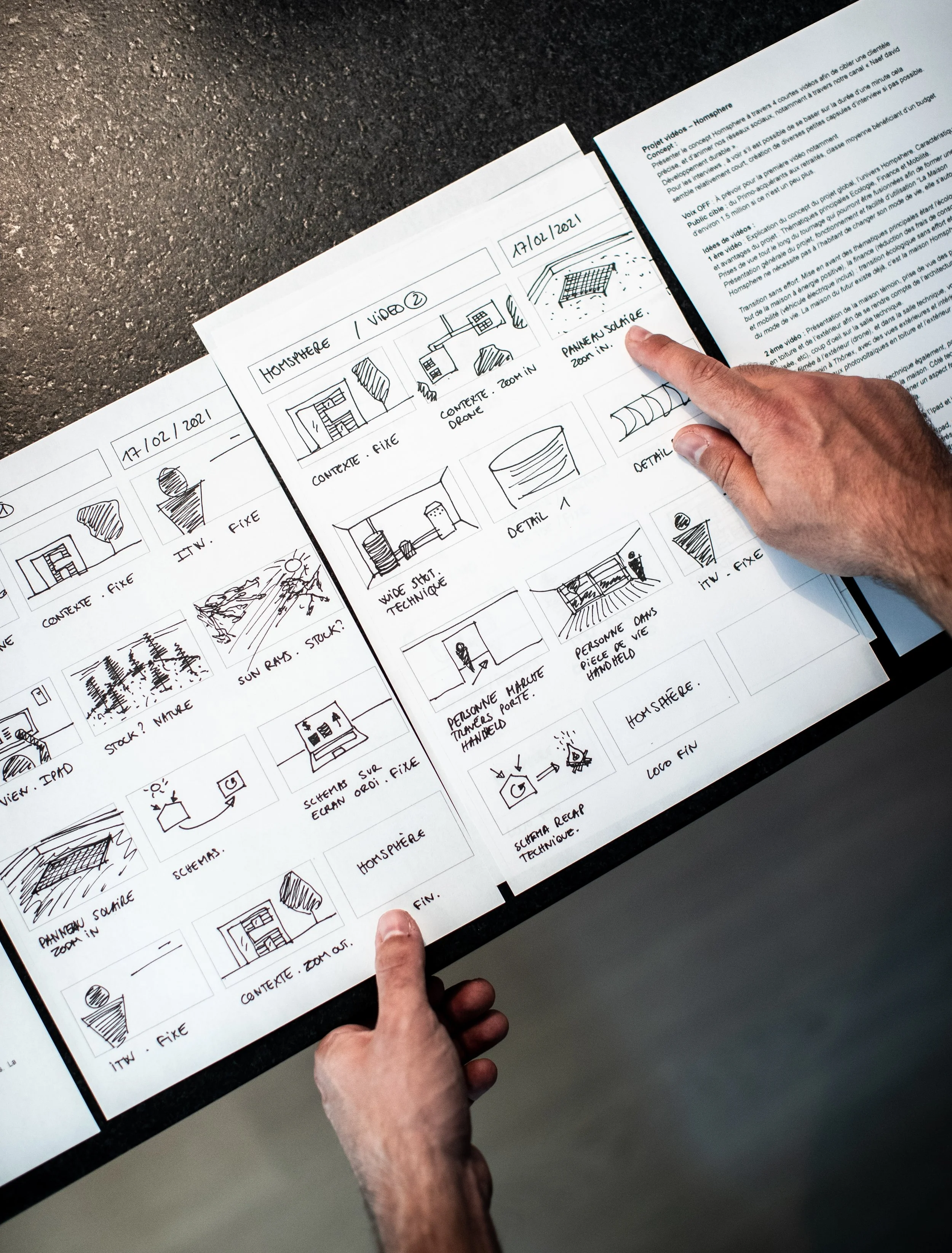Creating a captivating music video can be a rewarding experience for indie musicians. A well-executed video can showcase your talent and tell a story that resonates with your audience. In the world of indie music video production, there's an essential element that is often overlooked: the music video storyboard. In this post, we'll explore the time-saving benefits of storyboarding, share tips and techniques for mastering the art of music video storyboarding, review top storyboard tools, and provide insights from industry professionals, along with an appropriate indie music video case study.
The time-saving Importance of Storyboarding
Many indie musicians might consider storyboarding an unnecessary step in the creative process. However, a well-crafted storyboard can save time and ensure a smoother production process. It helps visualize the final product, allowing the director, producer, and other team members to identify potential issues before they arise during production.
Storyboarding is a crucial pre-production step that lays the groundwork for a successful music video. By mapping out the visuals, camera angles, and transitions, it provides a clear vision of the final product, ensuring everyone is on the same page. This level of preparation reduces miscommunication and costly reshoots, ultimately saving time and resources.
Key Elements of an Indie Music Video Storyboard
Visuals: Sketches or images representing each shot in the music video
Camera Angles: Descriptions of the camera's position and movement
Transitions: Notes on how each shot will transition to the next
Duration: Approximate length of each shot
Location and Set Design: Descriptions of the environment and any props
Lighting: Details on the desired lighting effects
Talent and Wardrobe: Information about the performers and their outfits
Step-by-Step Guide
Listen to the song: Immerse yourself in the music and lyrics to understand the message and emotion.
Brainstorm concepts: Come up with creative ideas that complement the song and resonate with the target audience.
Develop a shot list: Outline the sequence of shots, including close-ups, wide shots, and any other relevant camera angles.
Sketch or collect images: Draw or gather reference images for each shot, conveying the visual style and camera angles.
Add details: Include descriptions of camera movement, transitions, and other essential elements.
Organize and finalize: Arrange the shots in the proper sequence and make any necessary revisions.
Tips and Techniques
Keep the target audience in mind: Tailor the visuals and narrative to resonate with your fans.
Be flexible: Allow room for changes and improvisation during production.
Use color and annotations: Enhance your storyboard with color-coded notes and symbols for easy reference.
Incorporate mood boards: Create visual collages of inspiration to establish the overall tone and aesthetic.
Seek feedback: Share your storyboard with trusted team members for input and suggestions.
Top Storyboard Tools Creators
Storyboarder: A free, open-source software that offers an intuitive interface and robust drawing tools.
Boords: A web-based application with a simple drag-and-drop interface and collaboration features.
Celtx: A comprehensive pre-production platform that includes storyboarding, scriptwriting, and scheduling tools.
Insights from Industry Professionals
Award-winning director Vincent Haycock states:
“Storyboarding is a vital part of the creative process. It helps you visualize your ideas and communicate them to your team. The more time you spend on pre-production, the more prepared you'll be, ultimately saving time and resources during the shoot."
Cinematographer Autumn Durald emphasizes the collaborative aspect of storyboarding:
"A good storyboard is the result of collaboration between the director, producer, and other team members. It ensures everyone is on the same page and streamlines the entire production process."
Case Study: Tame Impala
The music video for Tame Impala's "Feels Like We Only Go Backwards" is an excellent example of the power of effective storyboarding. The psychedelic visuals, directed by Joe Pelling and Becky Sloan, took over 1,000 individually hand-painted frames to create the mesmerizing kaleidoscopic effect.
The detailed storyboard played a crucial role in organizing the visuals and transitions, ensuring that each hand-painted frame was part of a cohesive and engaging narrative. The result is a visually stunning video that complements the song and captures the attention of viewers.
Final thoughts
Mastering the art of music video storyboarding is a valuable skill for indie musicians and creators. By investing time in pre-production, you can save time and resources, ensure smooth production, and deliver a visually captivating final product. Utilize our tips and techniques, explore top storyboard tools, and learn from industry professionals to create your own compelling music video storyboard.
